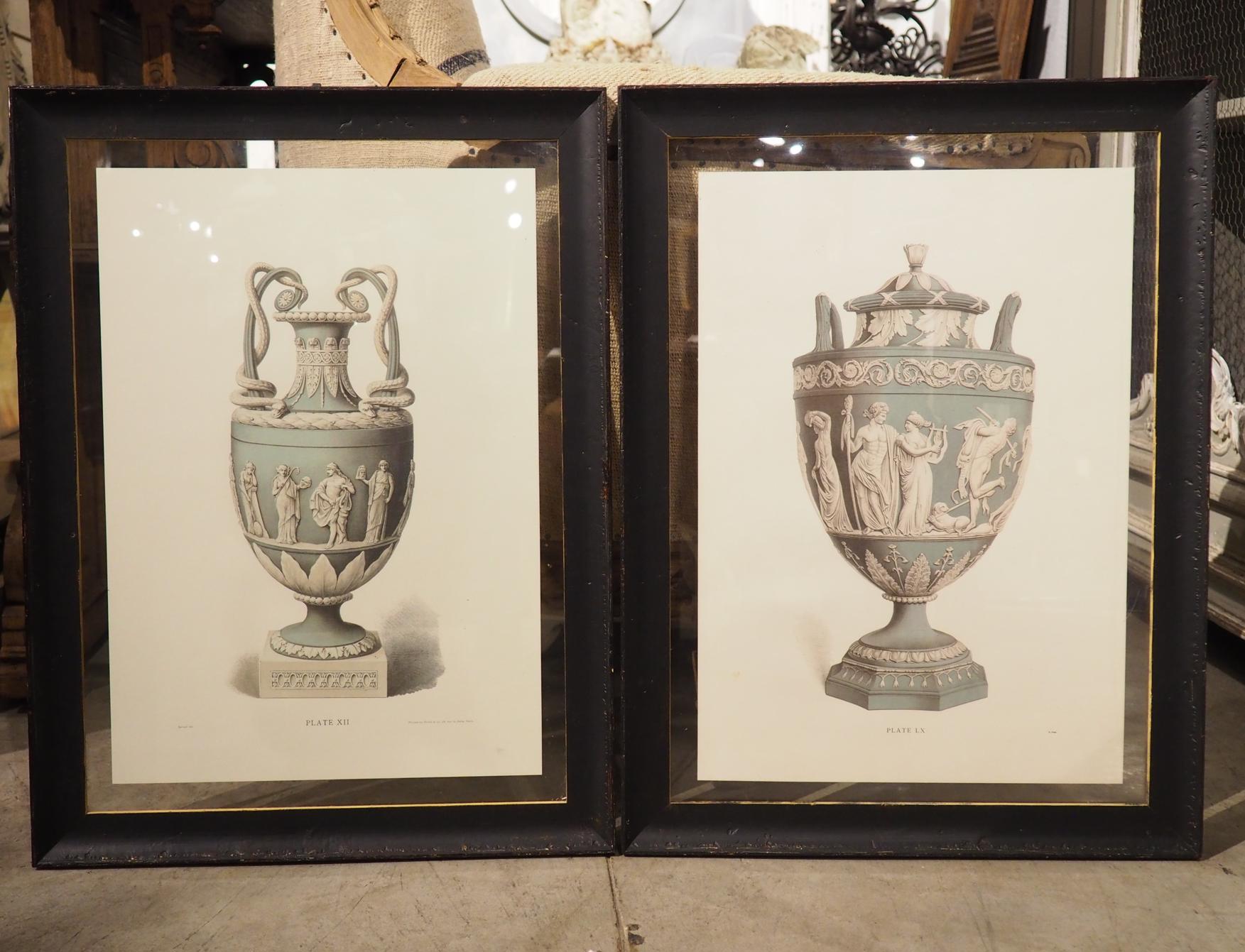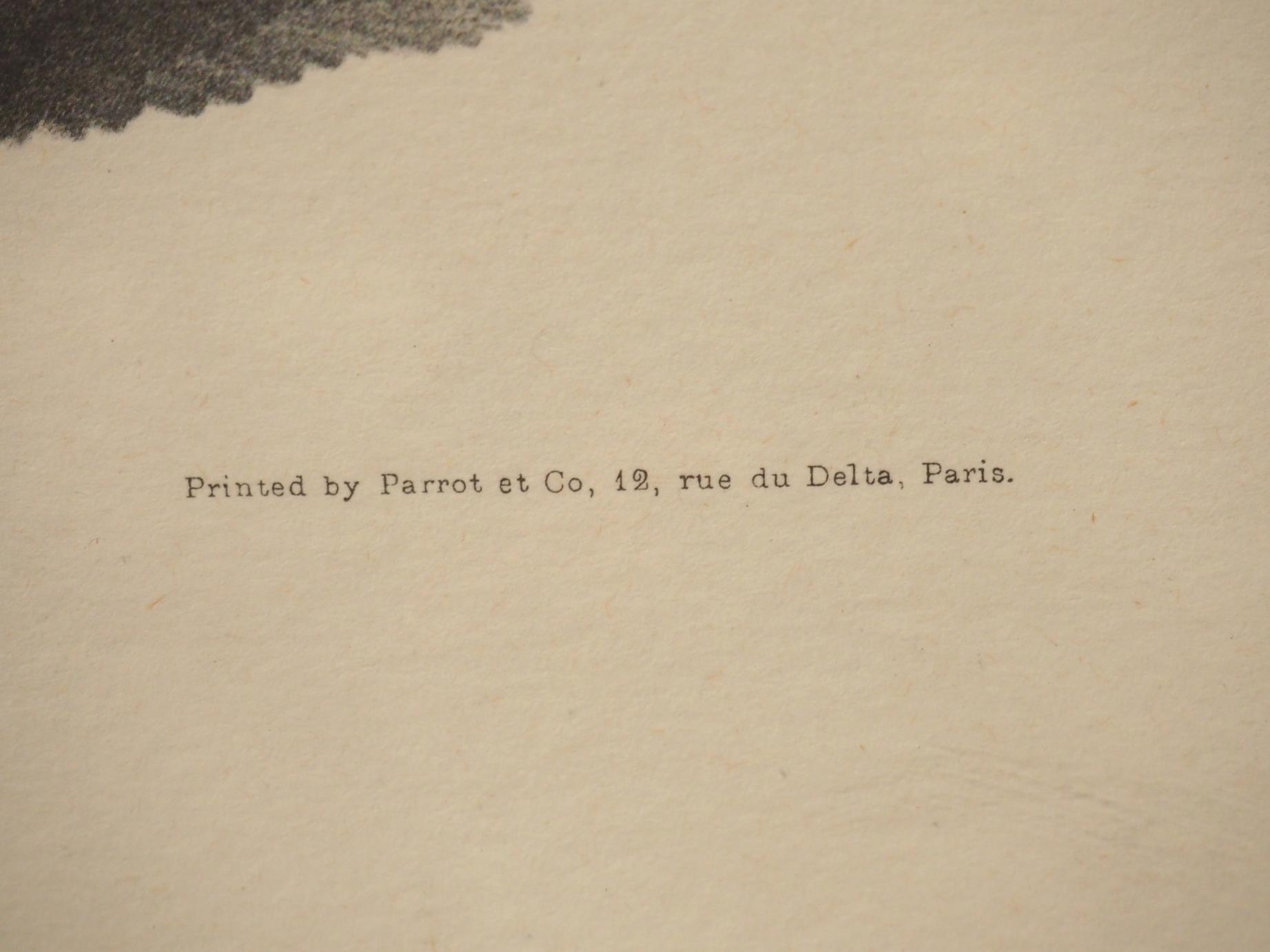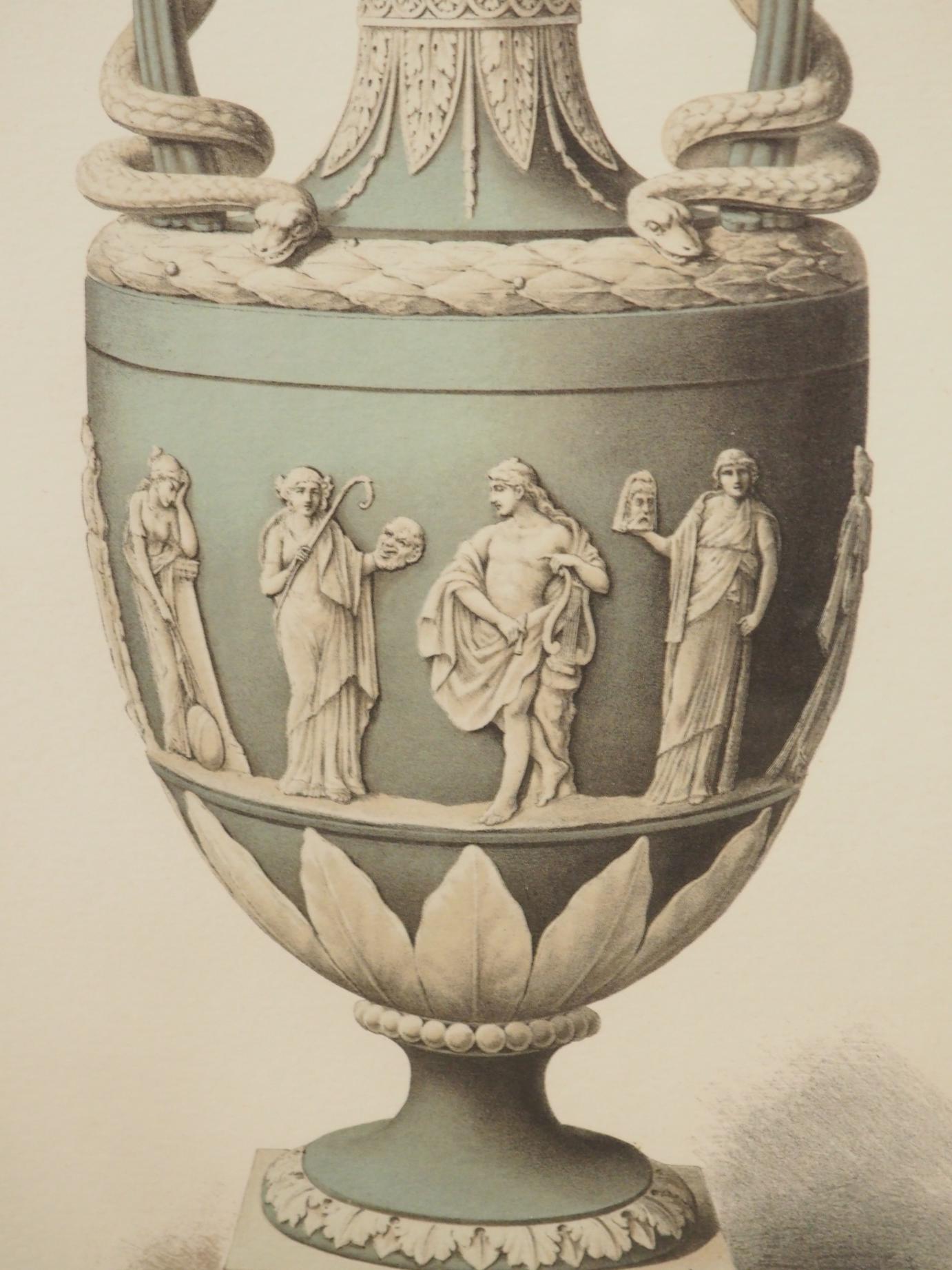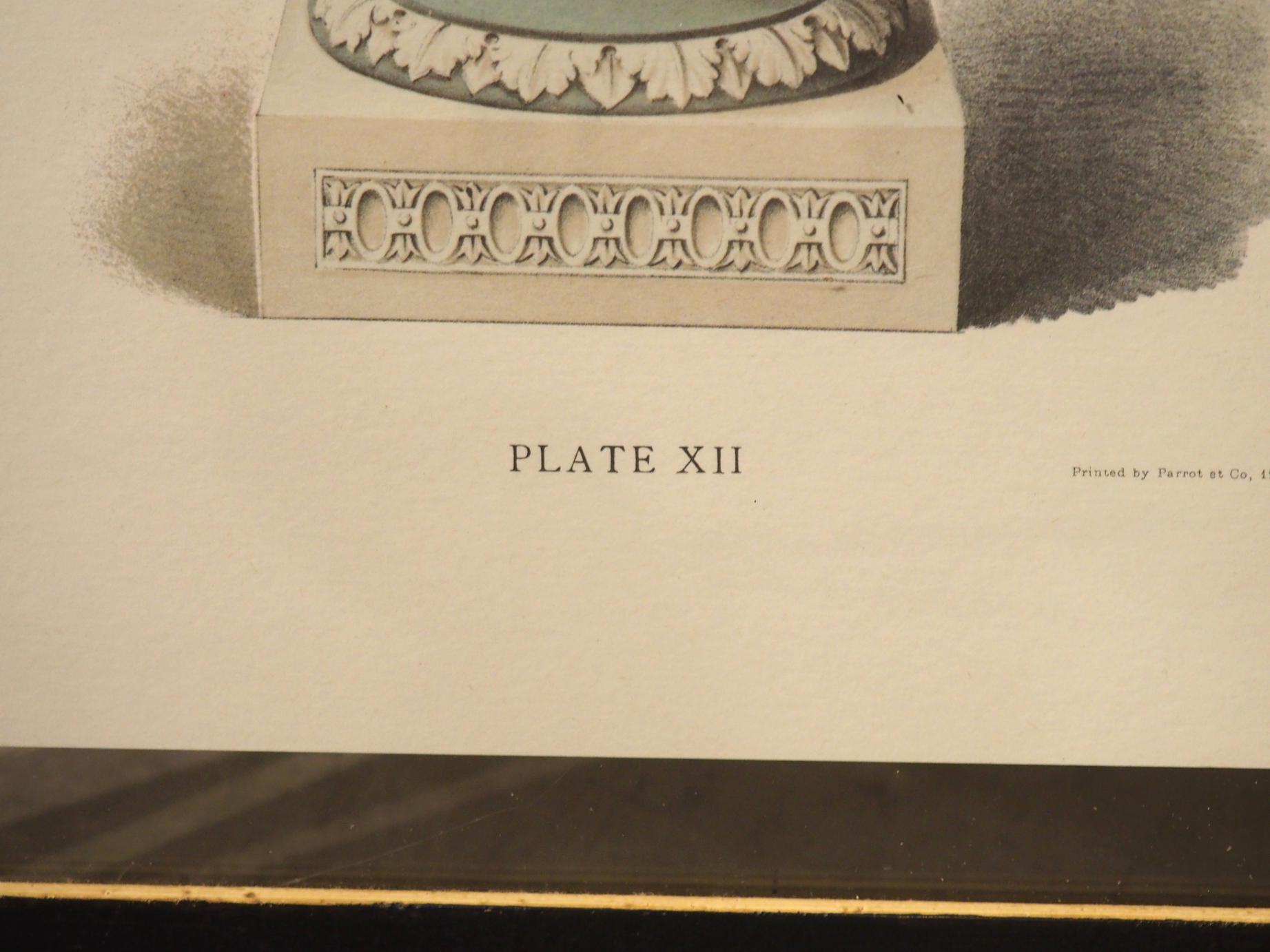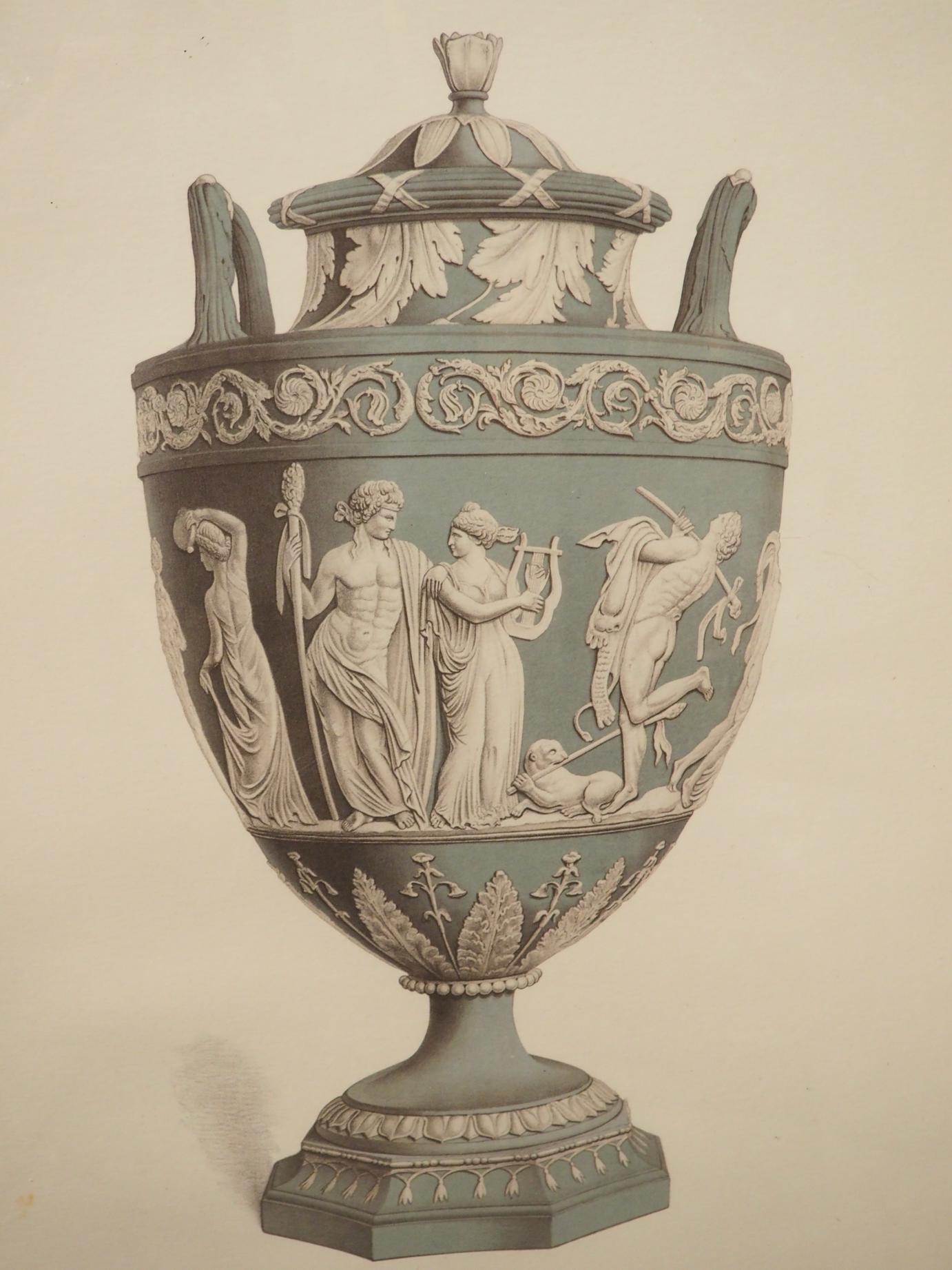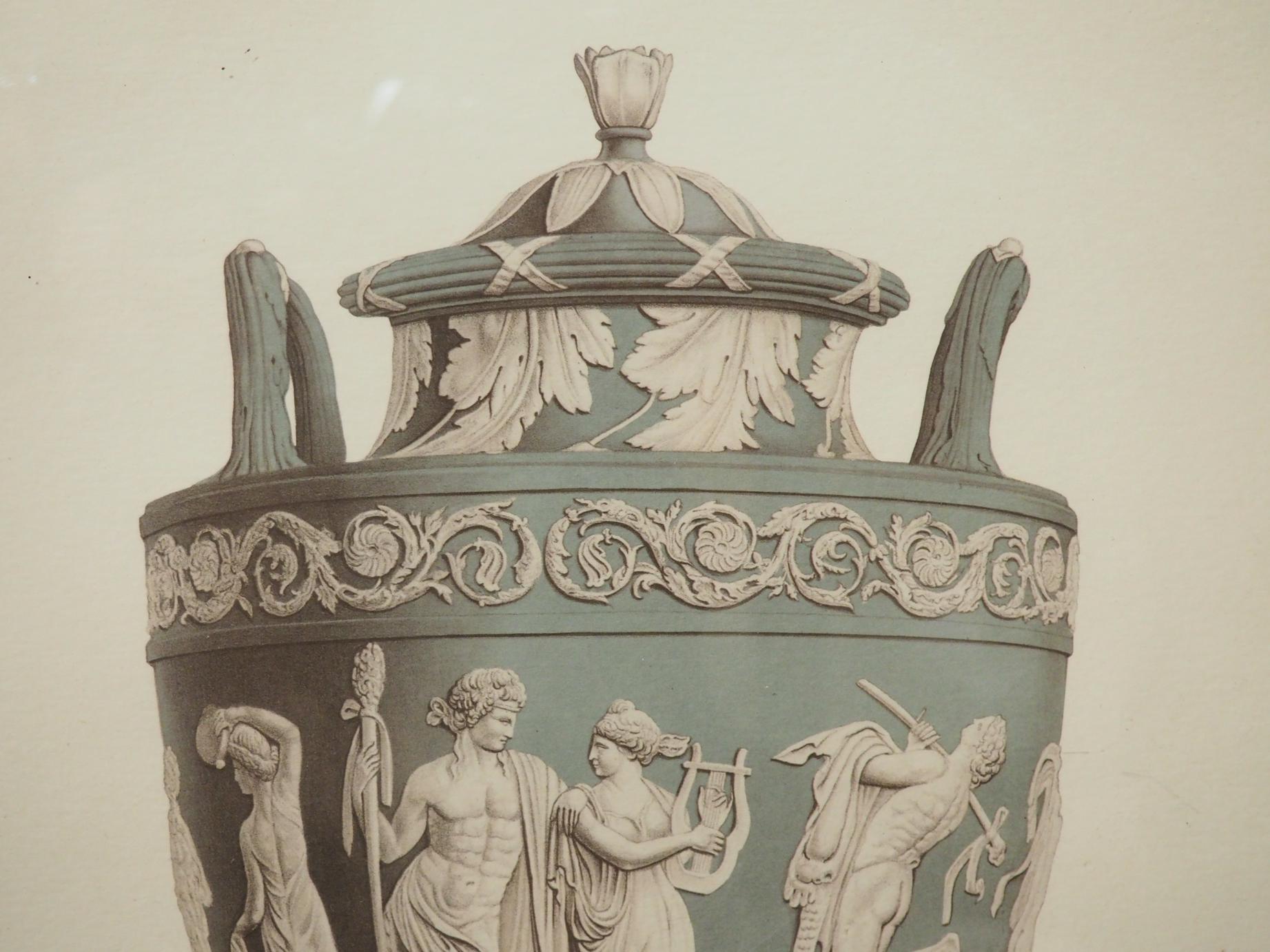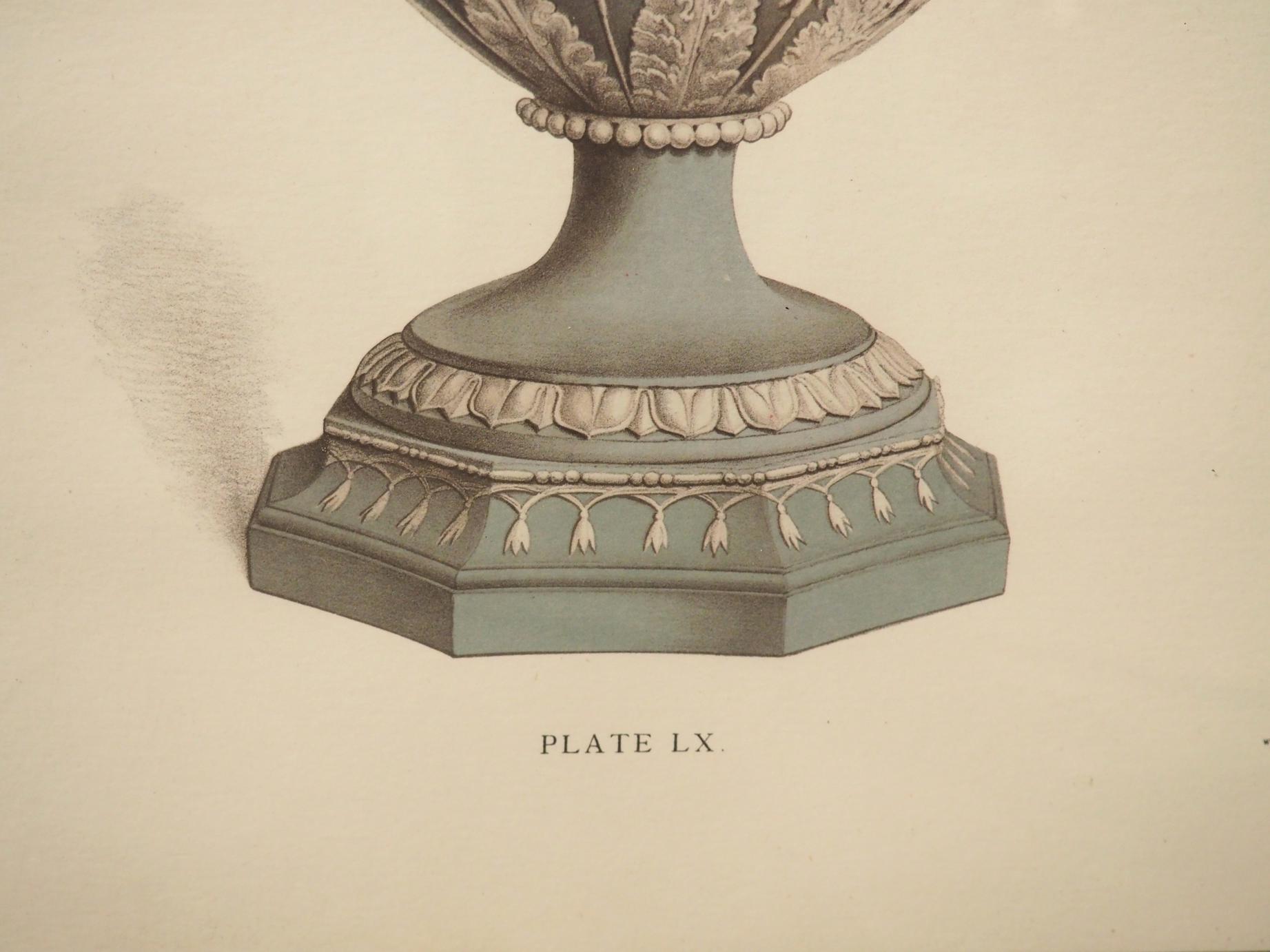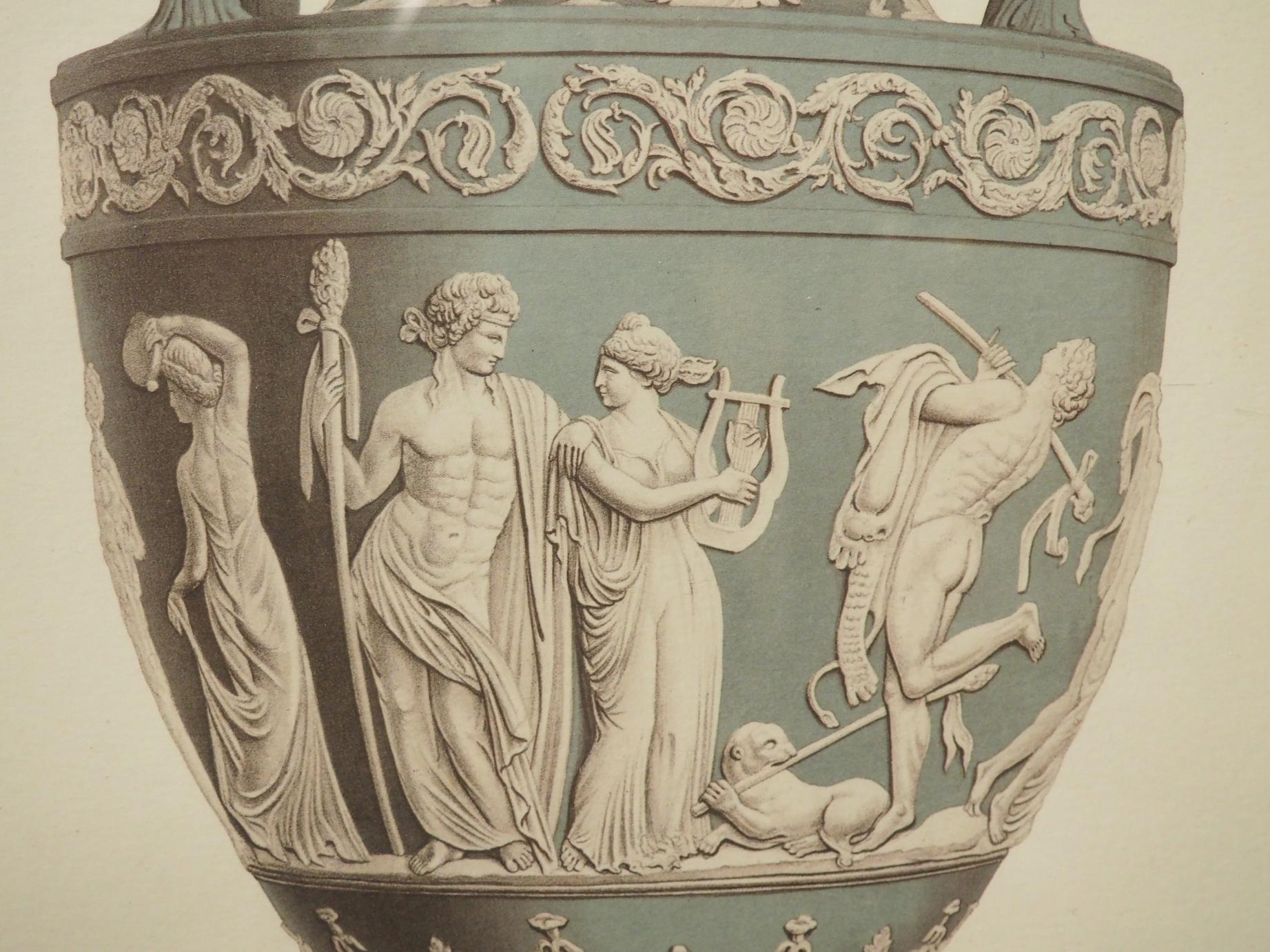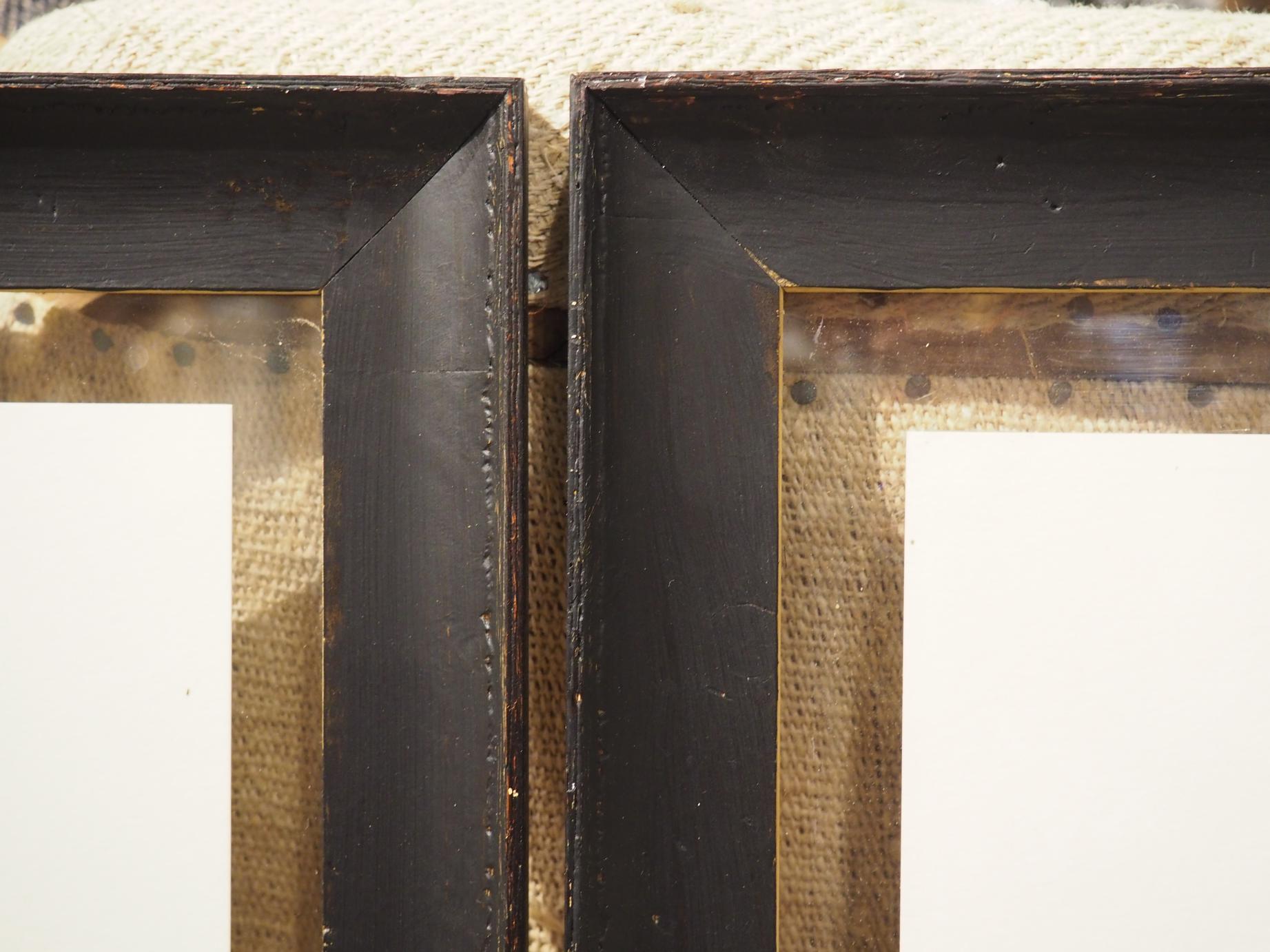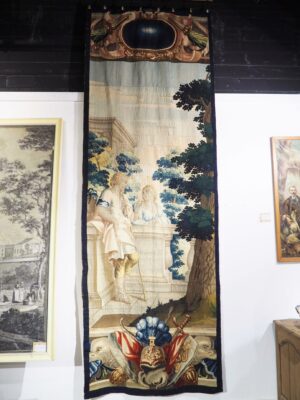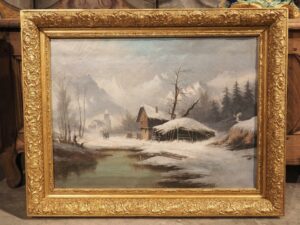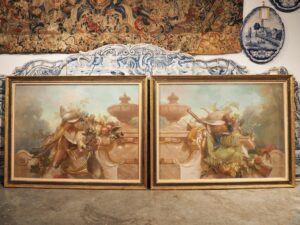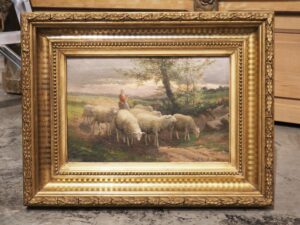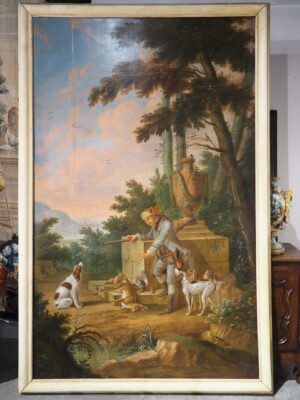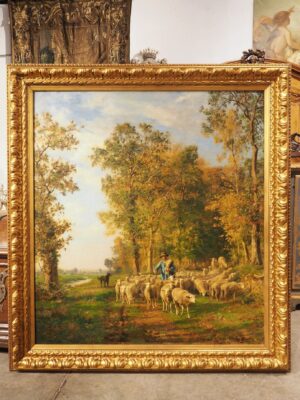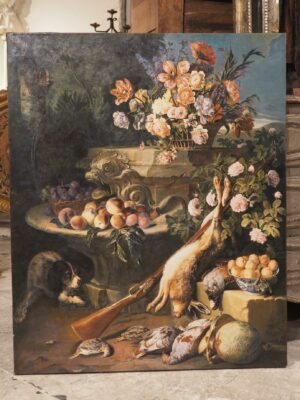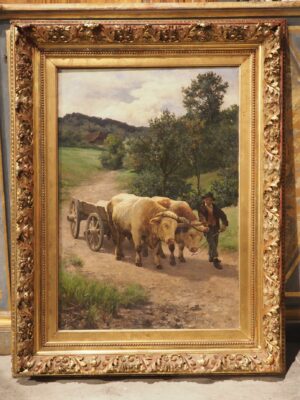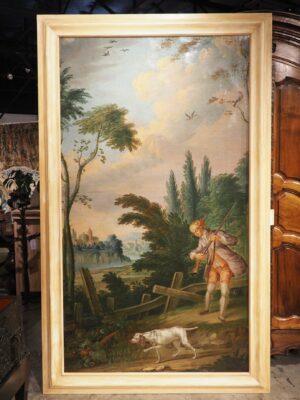Attributed to William Griggs, circa 1880, this pair of lithographs in hand-painted black frames depict a set of Neoclassical Wedgwood amphora vases. Both prints are on cream paper, and the vases have dry-bodied colors associated with Wedgwood products and traces of shadows emanating from the bases, giving the vases a life-like appearance.
Plate XII
A single vase depicting a Neoclassical scene, further adorned with foliage, repeating key, husks, and snake handles.
Unpainted elements are presented as white, contrasting beautifully with the celadon green hue of the vase.
The bottom right of the print reads “Printed by Parrot et Co, 12, rue du Delta, Paris.”
Plate LX
Another singular vase, also celadon green with unpainted areas of white. The Neoclassical imagery is more prevalent, accompanied by foliage, rais-de-couer, banded fasces, and branch-like handles.
The bottom right of the print reads “W. Griggs”.
William Griggs, born in 1832 in England, invented a printing process known as chromolithography, that allowed for colored prints to be produced. While living in Peckham, Griggs manufactured photolithographic works as early as 1868. In the late 1800s, Griggs produced a series of lithographs with Wedgwood urns as subjects.
CONDITION: Very good antique condition. Rubs and losses to the frames, which were painted more recently (presence of original gilt finish is visible in some areas). Rigged for hanging purposes. The frames and glass were added more recently.


